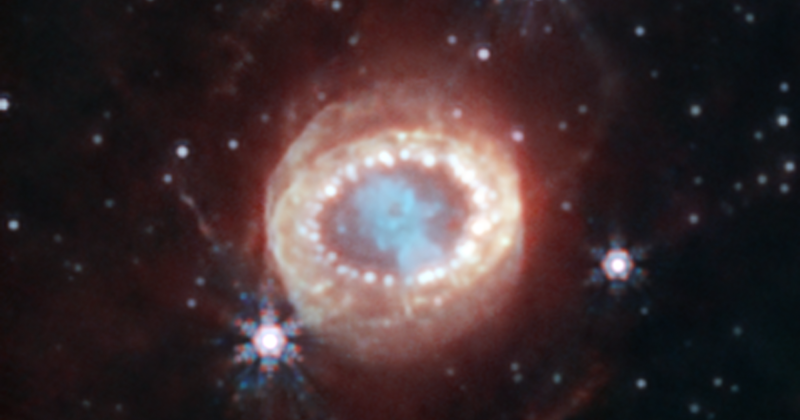Astronomers studying a famous supernova located 168,000 light-years from Earth have made new observations inside the structure that may help unlock the mysteries of exploding stars.
The supernova, known as SN 1987A and first discovered in 1987, has been studied by scientists for decades. A supernova is the powerful explosion of a star, which occurs when a star has reached the end of its lifespan.
The recent observations revealed a central structure, shaped like a keyhole, "packed with clumpy gas and dust ejected by the supernova explosion," according to NASA. Researchers said the dust is so dense that even the highly advanced James Webb Space Telescope cannot see through it, causing the "hole" shape in the keyhole structure.
The shape is also formed by a bright surrounding ring and two hourglass-shaped outer rings. The surrounding, equatorial ring is made up of material ejected millennia before the supernova exploded. The ring also has bright hot spots, formed by the supernova's shock wave hitting it.



 Space
Space Astronomy
Astronomy


